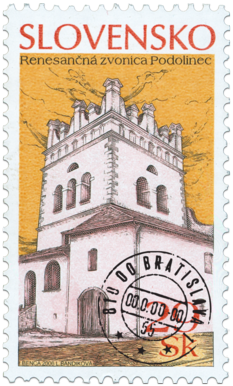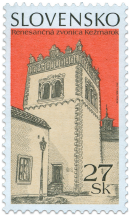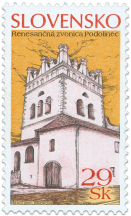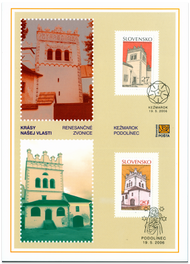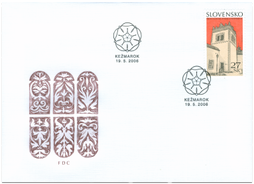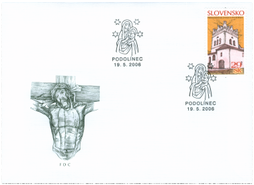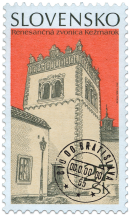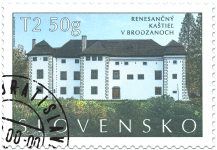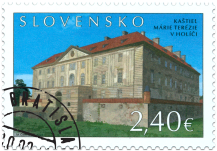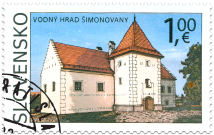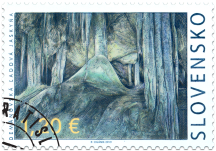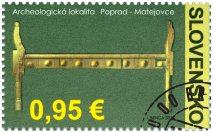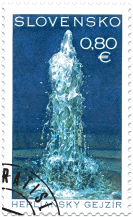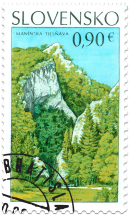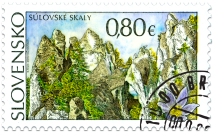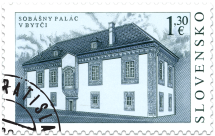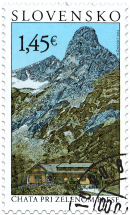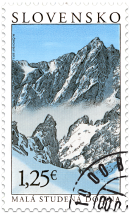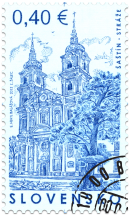377 Date of issue
19.05.2006 Face value
29.00 Sk Sell price
0.48 €
© Slovak post, 2006 Renaissance art in Slovakia arose in the early 16th century, simultaneous with the dying embers of the Gothic tradition. Thanks to artists and craftsmen from Italy and Dalmatia invited to Budína by King Mathias Corwinius, the Renaissance came to Slovakia a little earlier than other countries north of the Alps. Following the defeat of Hungarian troops by the Turks at Moháč in 1526, the architecture focused (especially in the southern parts of Slovakia) on the construction of fortifications and defence systems. Typical examples of Renaissance architecture in Slovakia are mansions (kaštiele). The renaissance boomed especially in Eastern Slovakia, mainly in the Spiš region (German: Zips). The influence of the neighbouring Poland and strong native traditions brought a unique style - also called East-Slovak Renaissance. Typical of this construction style are belfries with the typical gable-attic, often extensively decorated with sgraffitos. The town Podolínec is one of the oldest Slovak towns - achieving its urban privileges in 1292. This prosperous town with well-developed trade and crafts (one of many Spiš towns belonging to Poland between 1412 and 1772) significantly contributed to the development of Renaissance architecture. The original urbane structure with its medieval layout and fortifications has survived to the present. The Renaissance belfry in Podolínec was built in 1659 and was situated in the area of the parish-church dedicated to the Virgin Mary's Ascension. The low prismatic tower with striking double-attic and plastic blind arcature and arcade sound-openings are typical examples of Renaissance structures of the Reformation Era. A speciality of this belfry is the use of its ground-floor as a town-hall. Upstairs (accessible through an attached semicircular staircase) is a precious bell from 1392. Next to the belfry's staircase is a missionary-cross with the statue body of the crucified Jesus. The FDC shows a detail of this impressive sculpture. PhDr. Jadwiga Lacková
Show less© 2024 POFIS - Postal philatelic service. All rights reserved

